Chapter 15
Creating the Final Touch with Inside Sales
In This Chapter
![]() Combining your lead-generation efforts with sales follow-up
Combining your lead-generation efforts with sales follow-up
![]() Prioritizing hot leads for sales outreach
Prioritizing hot leads for sales outreach
![]() Working with sales to outline the lead hand-off process to avoid a leaky sales funnel
Working with sales to outline the lead hand-off process to avoid a leaky sales funnel
![]() Training your sales teams to deliver your marketing messages and content to leads
Training your sales teams to deliver your marketing messages and content to leads
No lead can turn into a customer without the help of inside sales — they are your team on the front line and are often the first people to speak directly to a lead. What is an inside sales team? According to sales thought leader Ken Krogue, “Inside sales is remote sales, or sales in the cloud.” Many B2B companies with longer sales cycles have both inside sales teams who qualify leads and set appointments (sometimes called sales development reps, or SDRs), and account executives who engage in a relationship-based in-person sell. (This is sometimes called field sales because those folks are out in the field.) Why does this approach work? You want to qualify your leads before you actually start selling them a product, so your inside sales teams qualify marketing’s leads, and your account executives are the closers. Inside sales also provides a career path for those new to the world of sales who want to learn the ropes before getting into field sales.
An interesting aspect of an inside sales team is that many companies classify them as part of marketing because they help close the loop between sales and marketing. As a marketer, you need to be close to your sales team so that they can turn your leads into opportunities and qualify them to eventually be closed/won deals. By including inside sales as part of your marketing, you can cement the bond between the two teams.
And other companies include their inside sales function as part of their core sales team because the partnership between inside sales and field sales cements a solid sales process. How to structure your inside sales team may or may not be up to you, but you should know that there are options.
Marketo has done it both ways. Inside sales teams called sales development reps (SDRs) call marketing leads to get them ready for sales. They handle the sales and marketing handoff by either qualifying leads or sending them back to marketing for nurturing.
The inside sales function is a critical part to lead generation and ensuring that all of your effort as a marketer pays off in the end.
Forming an Inside Sales Team
I highly recommend that you consider forming an inside sales team to round out your lead-generation efforts, even if it is just one or two people. You don’t want your account executives focusing on cold calling and qualifying leads, so with an inside sales team, your top sales executives can focus on what they do best — closing deals.
As thought leader Craig Rosenberg of Funnelholic says, “The most successful lead-generation programs have dedicated phone resources whose sole job in life is to take raw inquiries and qualify them before being sent to sales.”
Hiring the best
Inside sales teams need to have sales acumen and be excellent communicators on the phone, which is a very specific and hard-to-find skill. Your sales reps need to be interesting, engaging, credible-sounding, and able to serve up a rebuttal for any form of rejection a lead gives them. Test their communication skills by doing extensive phone screens and role-playing.
LinkedIn is a great resource for good inside sales team candidates. Scout for people who have phone sales experience in high-volume businesses such as technology. You probably will find a lot of reps with phone sales experience within the technology sector.
Here are some other characteristics to look for when searching for your winning inside sales team:
- A college degree.
- Four to twelve months of experience on the phone or in a sales function.
- Leadership positions in college and high school, or involvement in competitive hobbies like sports.
- An outgoing personality: You don’t want a shrinking violet as your sales front line.
- Excellent written skills: Your inside sales teams will be spending time creating emails, so make sure they know how to write one.
- A desire to succeed and move up: In many organizations, the inside sales team members get promoted to account executives.
Setting goals and quotas
You need to think about how your inside sales teams will be measured and what their daily activities consist of. A good rule of thumb is that an inside sales rep should spend about two-thirds of his time calling on inbound leads (sourced through marketing efforts) and the rest of the time cold calling and researching.
For example, Marketo wants their inside sales reps to have about 40–60 meaningful interactions with leads per day. This means a good phone call or email exchange. This does not include voicemails or hang-ups — these are not meaningful in any way.
When I first graduated from college, my first job was in sales. I had a call quota — I had to make 60 calls per day. But they didn’t have to be meaningful interactions at all. I could leave voicemails and still get credit for the call. My phone had a counter and that was all. So I was able to successfully reach my call quota each month without actually having much interaction with my leads. You want to avoid this at all costs. Marketo insists that sales reps have meaningful conversations recorded in a customer relationship management system (CRM), with some sort of action being taken to qualify the lead or return the lead back to marketing for lead nurturing.
How do you come up with an inside sales quota? You take your number of daily meaningful interactions (say, 50 in this case), multiply that by 20 (because there are generally 20 business days in a month), and multiply again by two-thirds (because we know the reps are only spending two-thirds of their time qualifying leads). This gives you a target of interactions per month per inside sales person.
You can take this number, about 650 in this case, and divide that by 2.6 (which is the average number of calls it takes our inside sales reps to qualify a lead), and you can target your inside sales reps to work with about 250 quality leads per month.
Syncing Your Marketing Automation Tool with Your CRM
To complete the lead handoff between sales and marketing, you need to have a good integration between your marketing automation tool and your CRM system. This ensures that all lead data, such as scoring and behavioral milestones (such as filling out a form), can be transferred directly to your CRM tool, where your sales teams live.
Why is this important? If you can communicate to sales what your hottest leads are at any given time so they can follow up right away, no leads fall through the cracks. Plus, your sales team can engage leads with relevant information because they have insight into where they have come thus far in their journey.
Many marketing automation systems, such as Marketo, provide sales intelligence in a simple dashboard format for applications made for CRM systems such as Salesforce and Microsoft Dynamics CRM.
Through these dashboards, as shown in Figure 15-1, sales can determine their hottest leads and opportunities so they can prioritize their time based on lead quality and urgency. Note the stars and flames indicate that the lead is urgent and timely.
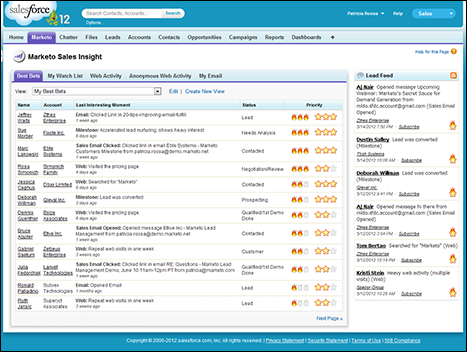
Figure 15-1: A Marketo Sales Insight dashboard.
Providing interesting moments to sales
Because leads do most of their research online before they speak to a sales rep, in order for your inside sales teams to truly have the knowledge they need to speak directly to a lead, they need in-depth information about lead activity.
Marketing automation tools can provide sales alerts when a lead has an “interesting moment,” for example, when he downloads a pricing page or views a demo. Sales also can get detailed buying behavior such as email conversions, website pages visited, and behaviors that indicate strong buyer interest.
Figure 15-2 shows an example of what sort of behavior marketing automation can communicate to sales through a CRM in Marketo Sales Insight.
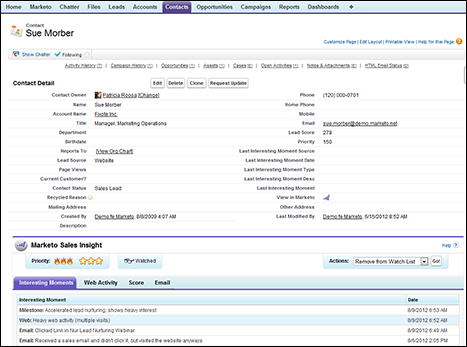
Figure 15-2: Marketo Sales Insight interesting moments.
Enabling sales to send trackable emails
Many CRM systems have the ability to send emails, but they simply don’t have the type of functionality needed for detailed tracking. But with marketing automation integration, sales can track email performance and get alerts when a lead engages with an email. Inside sales teams can create their own text-based emails or use a variety of templates that marketing creates.
Figure 15-3 shows an example of what one of these trackable emails might look like in a system like Marketo.
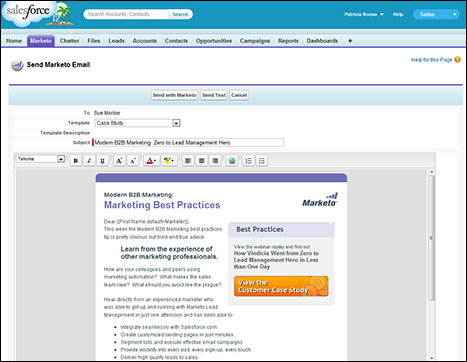
Figure 15-3: Marketo Sales Insight email template in a CRM.
Another great aspect about enabling sales to view data from a marketing automation tool within their CRM is that they can send leads directly back to marketing for lead nurturing. This is a huge part of the lead lifecycle process, and will be discussed at length in Chapter 17. Many times, a lead simply won’t be ready to purchase yet — even if she has had an interesting moment. If a sales rep has the capability to send leads directly back to marketing or add them to a lead nurture flow, you can ensure that sales and marketing remain tightly aligned.
Defining the Lead Path
Sales and marketing need to agree upon a methodology to determine what leads are qualified and what leads aren’t. This is a critical element to successful sales and marketing alignment. You need to come up with a shared sales and marketing definition for what a good lead means.
But what happens when a lead leaves marketing’s hands and goes to sales? You need to have a concrete lead qualification path that inside sales reps can follow before they know whether to qualify them and send them onto an account executive, or send them back to marketing.
Marketing-qualified leads (MQLs)
A marketing-qualified lead can be defined as a lead that is defined as “good” by marketing. This means that the lead has hit a specific score or has had an interesting moment, indicating that an inside sales rep should call her.
These are the factors that should determine an MQL:
- Fit: These are mostly demographic criteria such as job title, industry, geography, and so on. These criteria should define what types of buyers typically purchase your product.
- Behavior: This indicates a lead’s level of buying interest designated by his behavior. Maybe he has downloaded a late stage ebook or datasheet, or maybe he has attended a webinar.
Sales-accepted leads (SALs)
After a lead is sent to sales, your inside sales reps need to accept those leads. This step is often absent from many lead funnels, but it's an important step to pay attention to. Your sales teams need to take your MQL and make sure that the lead is close enough to purchasing to be qualified by sales and ultimately sent to one of your outside sale reps.
According to Sirius Decisions, there are specific reasons an inside sales rep might not qualify a lead. They include
- Unable to reach: A sales rep can only spend so much time trying to reach a lead by calling, emailing, and leaving messages. If the rep still can’t reach a lead and she has met the Service Level Agreement (SLA), the lead can be recycled back to marketing.
- Inaccurate data: The lead data is not accurate — for example, it includes a wrong phone number, wrong email address, and so on.
- No Budget, Authority, Need, and Time (BANT): The lead has no budget, isn’t the right person to speak with, doesn’t have a need, or the timing doesn’t quite work out.
- No fit: A lead’s need does not line up with your product or service specifications.
If a lead is unable to be qualified by your inside sales rep, the lead should be recycled back to marketing so it can be nurtured again or removed from the mix.
Sales-qualified leads (SQL)
After a lead is accepted by sales, it needs to be qualified. SQLs are your golden tickets to be fast-tracked to your account executives to begin the sales process. Why is it important to truly qualify a lead? Well, if you send bad leads to sales, they won’t close deals and then both you and sales look bad.
According to Salesforce, here is what you should look for when qualifying a lead to send to an account executive:
- BANT: The lead has the budget, authority, need, and the right timeline to make the right decision.
- Shows interest: The lead seems very interested in your product or service. She has downloaded a variety of assets, watched a demo, and had a positive interaction with your inside sales rep over the phone.
- Fits your buyer profile: The lead has many similarities to those that have purchased in the past.
- Has a sense of urgency: The lead is ready to purchase within a reasonable time frame. He has a sense of urgency about making a decision.
Enabling Your Sales Team with Content
Your sales teams need to supplement their selling skills with great content. This includes content in all stages of the funnel: TOFU, MOFU, and BOFU. Content types can include ebooks, webinar recordings, assessment sheets, ROI calculators, datasheets, and more. Your sales teams also need some professional-looking sales tools to showcase your product or service in a professional manner. That way, if a lead has a question during a call or needs a product or service explained, your sales team is armed and ready.
Make all of your sales collateral available to sales reps in one place — either directly in a CRM tool or through a cloud-based document hosting system such as Box or Dropbox. Also make sure you categorize your assets appropriately and in a way that sales can understand, so there is no guessing on what piece of content to use and when.
Developing sales presentations
Your sales teams need a professional-looking sales deck to present to leads through a virtual meeting using a tool like GotoMeeting or join.me or in person. It's my experience that if you leave each sales rep to create her own deck, you wind up with inconsistent branding and messaging. Plus, you can’t ensure that each and every deck even looks professional.
In order for your sales teams to show a consistent brand experience, marketing should help create decks that include a company PowerPoint template, consistent product or service messaging, some professional screenshots (if applicable), and other nice-looking imagery.
I came across a great universal pitch deck on SlideShare created by Creative Aces, a company that makes sales decks for businesses. It has a great outline for what you should think about including when developing your master sales deck (note I removed slides that I thought weren’t applicable):
- Your title page: You should include your company name, logo, stock ticker symbol (if your company is publicly traded), tagline, website, and nothing else. Take a look at the Creative Aces example slide in Figure 15-4. Note the deck includes images of the first slide for a few company decks as an example.
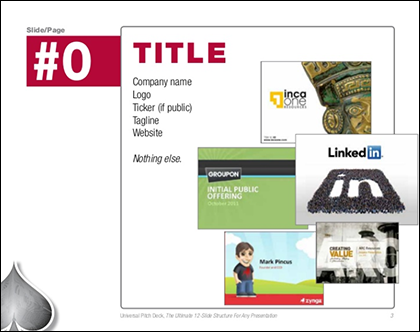
Figure 15-4: A sales deck title slide.
- Overview: This should contain your company tagline and why your company is awesome. This slide should really pop. Figure 15-5 shows the Creative Aces example page.
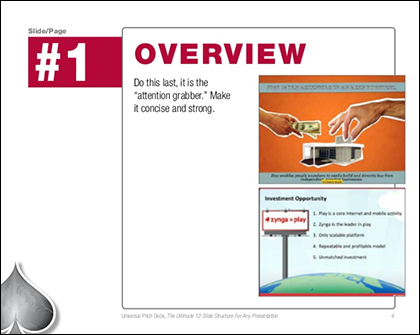
Figure 15-5: A sales deck overview slide.
- The problem: What is the problem that your services can solve? I would encourage your sales reps to include their own copy here in addition to your main themes. Your reps should speak directly to the lead’s personal problems. Figure 15-6 shows an example.
- The solution: Describe the key benefits your company has to offer. Figure 15-7 shows a few examples of what this slide might look like.

Figure 15-6: A sales deck problem slide.

Figure 15-7: A sales deck solution slide.
- Technology/methodology: How does your company deliver on the products or services? What can a lead expect? It's okay if your company doesn’t sell technology. Instead, you can include your methodology or product development practices. Figure 15-8 shows an example of a technology slide. Notice how the examples have charts and graphs. Show your lead the how.
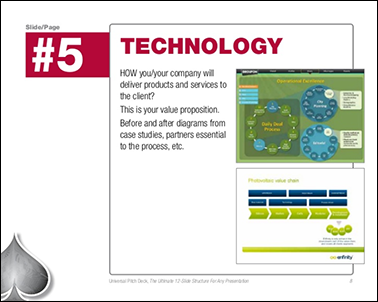
Figure 15-8: A sales deck technology slide.
- Competitive advantage: What makes you different (and better) from your competitors? You don’t have to call them out specifically, but talk about what sets you apart from the rest. Figure 15-9 shows different ways to set up this slide.
From there, you want to include additional customizable slides that pertain directly to your lead’s unique issues. Consider creating slides to introduce the team or talk about the sales timeline.
Providing collateral
You want to give your sales reps all of the material they need to be successful. Brief them on all new content and tell them how they can use it.

Figure 15-9: A sales deck competitive advantage slide.
Initially, you should create a spreadsheet (preferably a shareable Google document) that contains the following information for each asset:
- Title
- URL
- Persona
- Buying stage
- Uses
- Industry
- Brief description
Having everything all in one place makes it easier for sales to access your content. You should provide sales training for new, larger content assets. I suggest personal training only for larger assets because if you are a company that creates multiple content pieces per month, you probably won’t have the time to train each rep on every single ebook or infographic you come out with.
However, for your larger pieces, I highly recommend an in-person training that reviews your content and messaging. This makes it easier for sales to leverage your thought leadership.
For smaller assets, make sure they are aware of all the new pieces you create. For example, Marketo sends out a monthly content newsletter that includes blog stats, published content assets, and Coming Soon content assets. Take a look at Figure 15-10 to see an example from a content newsletter.
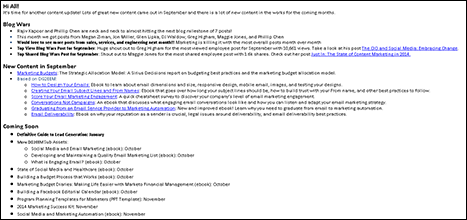
Figure 15-10: A sample content newsletter.
Training your sales team
In addition to the training you provide for your content assets, you also want to provide overall product and messaging training for sales. Every time you launch a new product or service, or have a large lead generation effort planned (such as event), you should provide thorough training. This could include
- Messaging
- Call scripts
- Rebuttals
- New sales decks
- New assets
If you are doing a more in-depth training, like a demo training, consider offering a certification to your sales reps. For instance, teach and train your teams on how to give a demo of your solution, require them to learn the demo, and then test their knowledge by having your sales reps perform a demo. If they pass, they can get “demo-certified.”
Overall, in order to have a seamless process between marketing and sales, you need consistency in definitions and consistency in messaging. If marketing leads the charge on this, your buyers will have great experiences and sales can close more deals.
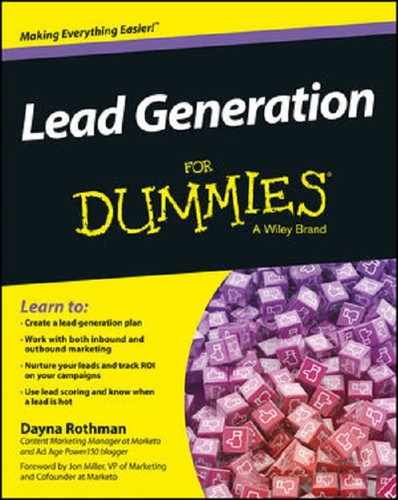
 Be sure to take into consideration your own sales cycle. Your inside sales reps may be qualifying more or fewer leads, depending on your sales cycle and how many leads your marketing team generates.
Be sure to take into consideration your own sales cycle. Your inside sales reps may be qualifying more or fewer leads, depending on your sales cycle and how many leads your marketing team generates.